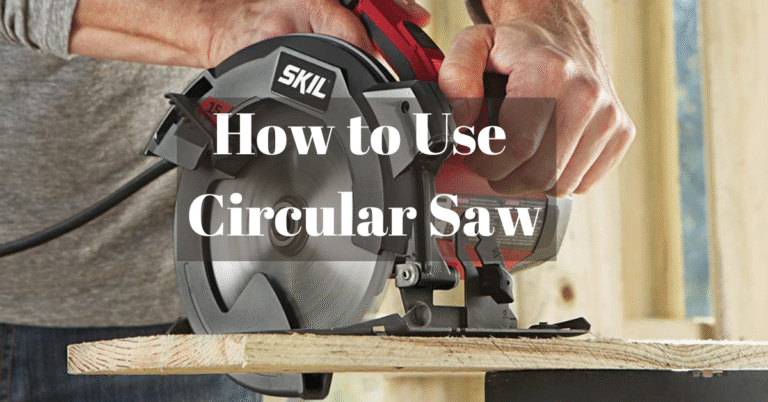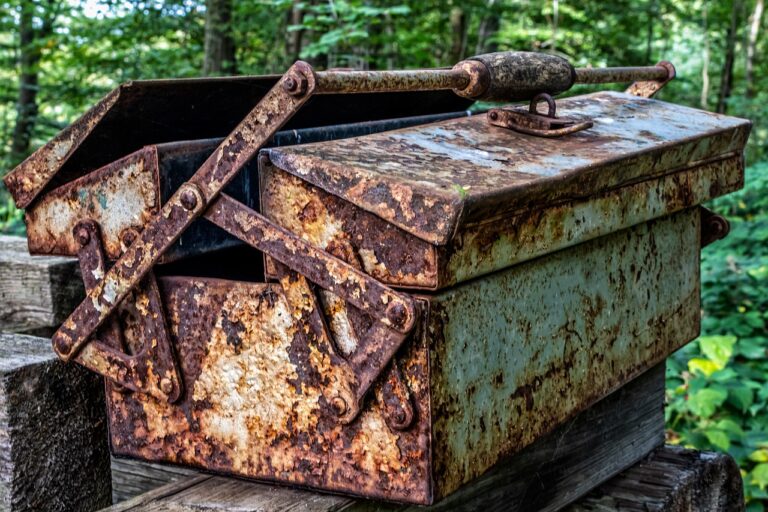How to Sharpen a Chainsaw Chain Like a Pro
If your chainsaw is struggling to cut through wood, spitting out fine dust instead of clean chips, or pulling to one side, there’s a high chance the chain is dull.
Don’t worry—this is totally normal after a few hours of use.
The good news?
You can sharpen your chainsaw chain like a pro, right at home, with minimal tools and effort.
We’ll walk you through everything you need to know to keep your chainsaw cutting like new.
Whether you’re a DIY enthusiast, farmer, or professional logger, mastering this skill will save you time, money, and frustration.
We independently evaluate all of our recommendations. If you click on the links we provide, we may receive compensation.
Table of Contents
- 1 Why Sharpening a Chainsaw Chain Is So Important
- 2 Tools You Need to Sharpen a Chainsaw Chain
- 3 Know Your Chain: Basic Anatomy
- 4 How to Sharpen a Chainsaw Chain Manually – Step-by-Step
- 5 Using an Electric Chainsaw Sharpener (Optional Method)
- 6 💡 Pro Tips to Sharpen Your Chainsaw Like a Veteran
- 7 When to Replace a Chainsaw Chain Instead of Sharpening
- 8 Safety First: Precautions When Sharpening Your Chainsaw
- 9 Conclusion: Keep Your Chainsaw Performing at Its Best
- 10 💬 What’s Next?
Why Sharpening a Chainsaw Chain Is So Important

Before we jump into the how-to, let’s understand the why. A sharp chainsaw chain offers many benefits:
- Efficient Cutting – Clean cuts with minimal effort
- Improved Safety – Less chance of kickbacks or saw-binding
- Lower Fuel or Power Use – A dull chain makes your engine work harder
- Longer Lifespan – Reduces strain on the engine and guide bar
- Better Results – Sharp chains leave smoother cuts, ideal for firewood, pruning, or carpentry
Warning Signs of a Dull Chain:
- Saw produces sawdust instead of chips
- You have to push hard for it to cut
- Chain smokes even with proper lubrication
- Uneven cuts or curved paths
- Chainsaw pulls to one side during use
Tools You Need to Sharpen a Chainsaw Chain

Having the right tools makes all the difference. Here’s what you need:
- Round file – Match the file size to your chain type (common sizes: 5/32″, 3/16″, 7/32″)
- File guide – Ensures consistent angle and depth during sharpening
- Flat file – Used to lower the depth gauges (rakers)
- Depth gauge tool – Maintains proper cutting depth
- Vise or clamp – To hold the saw in place while you work
- Work gloves & safety goggles – Always prioritize safety
- Optional: Electric chainsaw sharpener – Ideal for pros or frequent users
📌 Pro Tip: Always refer to your chainsaw manual to identify the correct file size and filing angle.
Know Your Chain: Basic Anatomy
Understanding how a chainsaw chain works will help you sharpen it effectively.
- Cutters: These are the sharp, hook-like teeth that cut into wood.
- Depth gauges (Rakers): Control how deep each cutter goes into the wood.
- Drive links: Fit into the guide bar and drive the chain around.
A well-sharpened chain has balanced cutters and rakers to ensure smooth and accurate cutting.
How to Sharpen a Chainsaw Chain Manually – Step-by-Step
Follow this foolproof method to sharpen your chainsaw like a seasoned pro manually:
Prepare Your Workspace

- Place the chainsaw on a workbench or flat surface.
- Clamp the bar securely using a vise.
- Make sure the chain is clean and tensioned properly.
Mark the Starting Point
- Use a marker or chalk to highlight the first cutter. This will help you keep track of your progress.
Set the File and Guide
- Insert the round file into the file guide.
- Align it with the cutter at the manufacturer’s recommended angle (typically 25° or 30°).
- Make sure the file sits snugly in the cutter’s curve.
Start Filing
- Push the file forward across the cutter using firm, even strokes.
- File in one direction only.
- Apply 3–10 strokes per cutter, depending on dullness.
- Important: Sharpen every second cutter on one side, then rotate the saw or switch sides to file the others.
Check and Adjust Rakers (Depth Gauges)
- Place the depth gauge tool over the rakers.
- If any raker protrudes above the tool, file it with the flat file.
- Repeat this for each raker to maintain even cutting depth.
Final Checks
- Inspect the chain for consistent cutter length and angle.
- Make sure no cutter is overly filed or damaged.
- Re-tension the chain as needed.
Using an Electric Chainsaw Sharpener (Optional Method)

For those who prefer speed and consistency, especially when sharpening multiple chains:
- Mount the electric sharpener on a bench.
- Clamp the chain into the guide rail.
- Adjust the sharpening angle and depth settings.
- Gently lower the grinding wheel onto each cutter, alternating sides.
- Avoid overheating the metal—go slow and steady.
🛠️ Recommended for commercial users or anyone handling multiple chainsaws regularly.
💡 Pro Tips to Sharpen Your Chainsaw Like a Veteran
- Use a fresh file for best results—files wear out over time.
- Always file each cutter the same number of strokes to maintain balance.
- Don’t skip raker maintenance—it makes a huge difference in cutting performance.
- Clean the chain of sap and debris before sharpening.
- Store sharpening tools in a dry, dust-free toolbox.
When to Replace a Chainsaw Chain Instead of Sharpening

Sometimes, sharpening is no longer enough. Consider replacing your chain if:
- Cutters are worn down to the witness mark
- Several cutters are broken or chipped
- The chain stretches and doesn’t hold tension
- You’ve already sharpened the chain more than 5–6 times, and cutting is still poor
🔗 Need a replacement chain? Shop our top-rated chainsaw chains here
Safety First: Precautions When Sharpening Your Chainsaw

- Always wear gloves and safety glasses
- Make sure the chainsaw is off, unplugged, or the battery is removed
- Ensure the chain is completely still before sharpening
- Keep children and pets away from the work area
Conclusion: Keep Your Chainsaw Performing at Its Best
Sharpening your chainsaw chain is one of the easiest ways to extend the life of your equipment, reduce cutting time, and stay safe.
With just a few tools and a little know-how, you can bring your dull chain back to life like a professional.
💬 What’s Next?
- 🔗 Want sharper results faster? Shop the best chainsaw sharpening kits now
- 🛒 Need an electric sharpener? Check out our top picks on Amazon
- 📩 Join our tool care community – Subscribe to our newsletter for more guides and gear reviews
- 💬 Have questions? Drop a comment below or message us—we’re here to help!
👉 Did this guide help you? Bookmark and share it with other chainsaw users!





